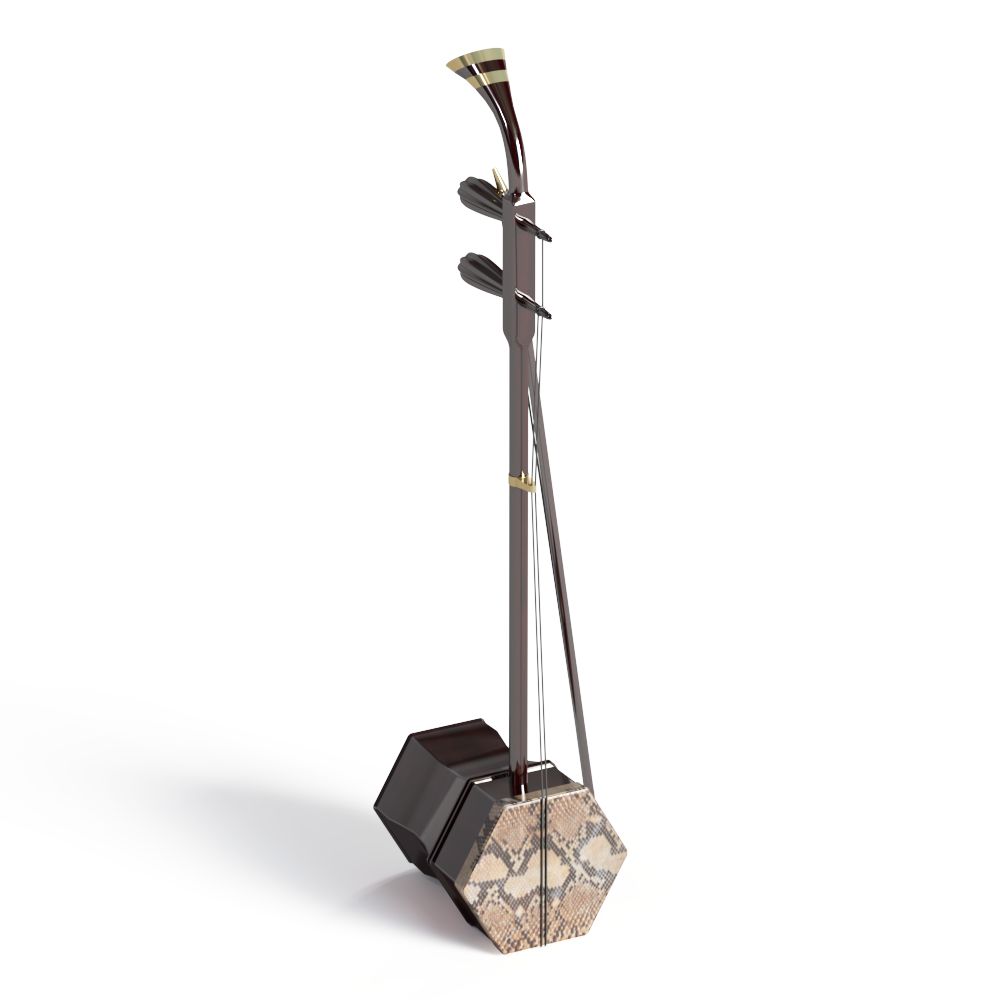Longbow of Erhu Bow
Longbow refers to a bowing technique played with a full bow at a slow speed, which is the basis of the erhu bow. Since this kind of bowing method requires a stable timbre and sound quality from the tip to the tail, it requires long-term and patient practice to achieve the requirements of professional performance. To draw the longbow well, we must master some basic essentials and movements of the longbow. The basic action of a long-skilled worker is: when drawing the bow, the right wrist should protrude slightly outward into a "extended state", and pull out to the right with the wrist as the first moving point. It should be noted that the big arm should not be stretched out too early, so that the elbow is raised too much, causing the bad tendency of "big arm up". The big arm should be gradually spread out when the bow is running to the position close to the middle bow. In addition, when drawing the bow, the right arm cannot be moved backward to the right, so that the bow is drawn into an arc. Everyone's arms have a certain difference in length, and you don't have to pull to the tip of the bow. Therefore, when the right arm is straightened, it can be considered that the bow is fully drawn. After the right arm is straightened, the hand also drives the bow to pull a few centimeters to the right, so that the wrist gradually switches to the "intermediate state". When pushing the bow, the upper arm should be retracted as the first move point, and the lower arm should be pushed to the left. At this point, the wrist should be "inwardly flexed". When the big arm is finished, the forearm continues to push to the left. After the forearm is retracted, the hand has to push the bow a few centimeters, so that the wrist is converted into the "intermediate state" again, so that the next action of drawing the bow can be started. In playing, these movements need to be natural, integrated and coordinated.

Erhu's longbow has the following two basic requirements: one is "flat", and the other is "straight". What is "flat"? When we say "flat", we mean that the bow hair must always be at a 90-degree angle to the string. From the perspective of the structure of the erhu, the width of the jin and the piano bar is slightly smaller than the width of the piano code and the piano bar, that is to say, when the piano bar is in a straight state, the strings have a certain slope. Therefore, the bow hair and the strings are required to form a 90-degree angle, and the bow root part is slightly raised. But this is only "slightly" raised, and there are many players who raise the root part so much that the angle between the bow hair and the string is less than 90 degrees, which is incorrect.
What is "straight"? The so-called "straight" means that the bow hair is always close to (not close to) the piano bar during the running process. To make the bow run on a straight track, this track is the extension of the bow shaft. In the past artist circles, there was a saying that "a line that can be drawn, but a large piece that can't be drawn", it is said that in the early erhu, the rosin was directly burned on the qin barrel, and the movement of the bow would leave the rosin on the rosin. traces. If the bow goes straight, pull the hot rosin out of a groove, and the trace left is a line; if the bow does not go straight, the trace left is a large piece.
For beginners of Erhu, if they cannot master the essentials of the longbow well, the following 9 problems will easily occur:
1. The bow does not run straight;
2. Wrist movements are incorrect when bowing;
3. The wrist moves up and down when changing bows;
4. The starting point of the bow is incorrect;
5. At the moment when the wrist is switched during the bow change, the fingers of the left hand are suddenly released, causing the bow change marks to be too large;
6. The ratio of pressure and speed in the bow is inappropriate, resulting in unsatisfactory sound quality;
7. Some players are accustomed to using more than two-thirds of the bow on the left (middle bow to the tip) of the bow, but rarely use or even not use the one-third of the bow on the right (bow root);
8. When playing, the bow hair should not be flat and stick to the strings, but rounded, so that unnecessary noise is emitted when it touches two strings;
9. The position of the thumb moves during the bow movement.
Therefore, when we practice the longbow, we must meet the following requirements: A good longbow performance should be correct in movement, straight in the bow, smooth in power transmission, appropriate in the ratio of pressure and speed, and should be round, loose, clean, and smooth in pronunciation. Pass, evenly. Longbow training is not just about practicing long notes, it is also a way of training breath control, articulation ideas, and timbre texture. At the beginning of the practice, it should be controlled by consciousness. After being skilled, it will gradually become a subconscious movement, and finally it will reach the level of "when you feel it, you will get the qi, and when you get the qi, you will hear the sound".
 渝公网安备 50010702504639号
渝公网安备 50010702504639号